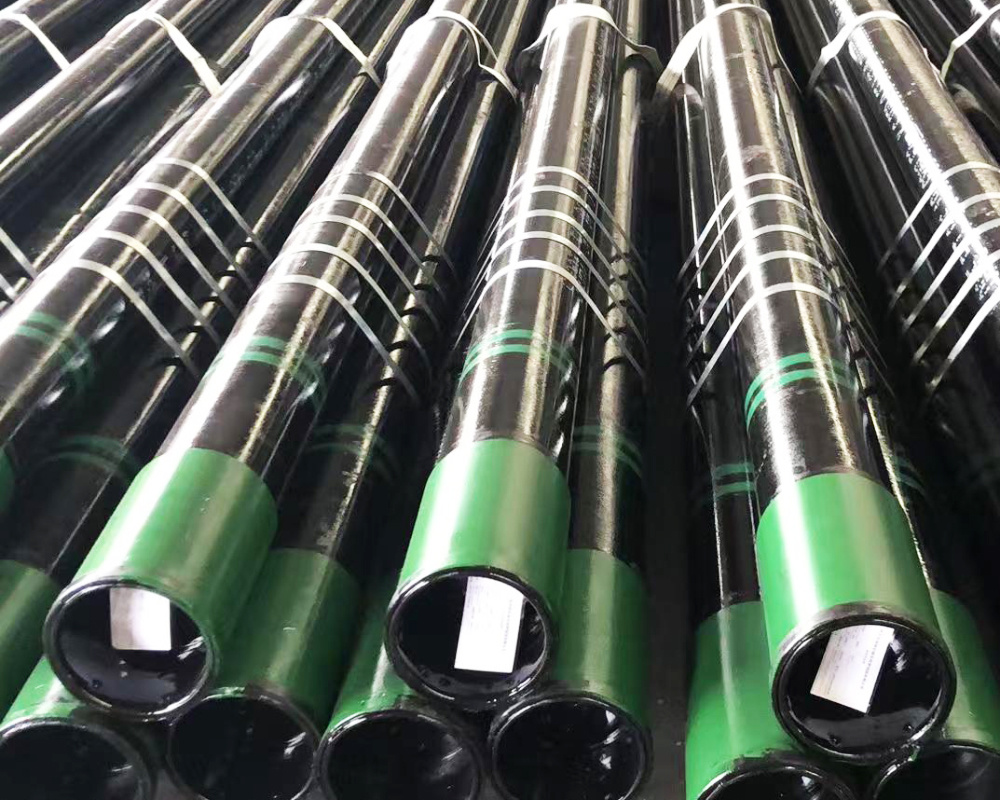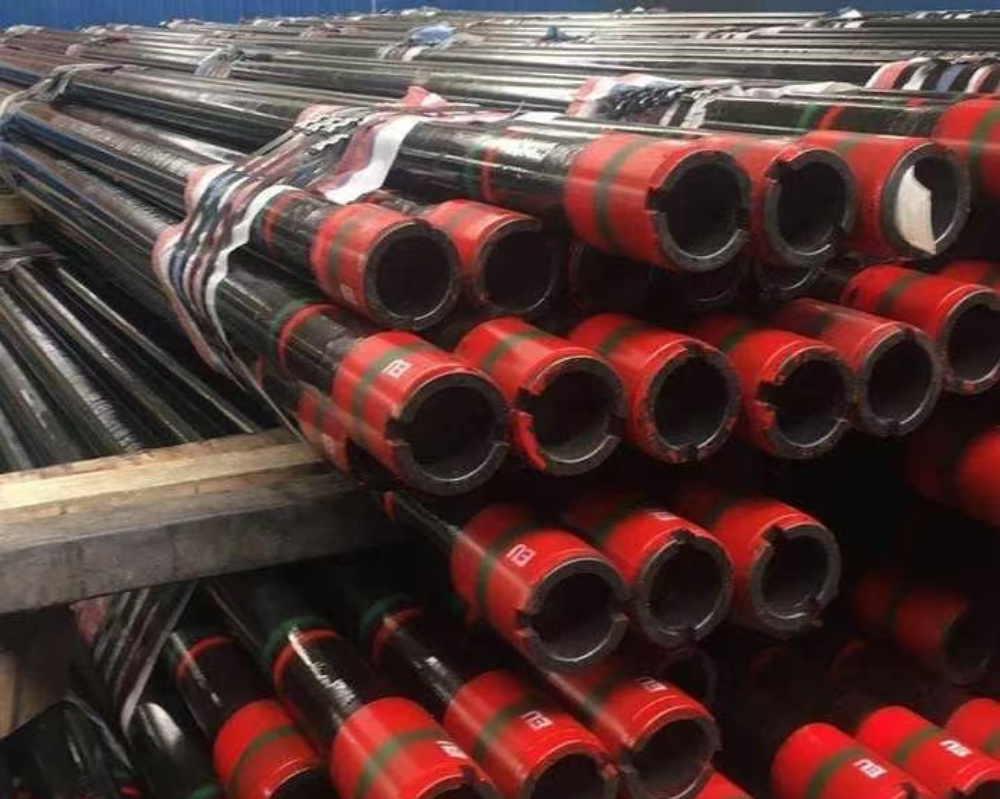A Comprehensive Guide to A53 Seamless Pipe Specifications: Exploring the Depths of Quality and Performance
A Comprehensive Guide to A53 Seamless Pipe Specifications
Table of Contents
1. Understanding A53 Steel
2. What is A53 Seamless Pipe?
3. A53 Seamless Pipe Specifications
3.1 Chemical Composition
3.2 Mechanical Properties
3.3 Tolerances
4. Manufacturing Process of A53 Seamless Pipes
5. Applications of A53 Seamless Pipes
6
A Comprehensive Guide to A53 Seamless Pipe Specifications
Table of Contents
- 1. Understanding A53 Steel
- 2. What is A53 Seamless Pipe?
- 3. A53 Seamless Pipe Specifications
- 4. Manufacturing Process of A53 Seamless Pipes
- 5. Applications of A53 Seamless Pipes
- 6. Advantages of Using A53 Seamless Pipes
- 7. Comparison with Other Pipe Types
- 8. Frequently Asked Questions (FAQ)
1. Understanding A53 Steel
A53 steel is a carbon steel alloy widely utilized in various industrial applications, particularly in the construction and manufacturing sectors. This material is known for its strength, durability, and versatility, making it an exceptional choice for pipes that require reliability under pressure and extreme conditions. The American Society for Testing and Materials (ASTM) established standards for A53 steel in ASTM A53/A53M, which governs the specifications and performance criteria for seamless and welded pipes.
2. What is A53 Seamless Pipe?
A53 seamless pipe is a specific type of piping product manufactured from A53 alloy steel through a seamless process, meaning it is formed without welding. This method enhances the pipe's strength and integrity, making it suitable for high-pressure applications. A53 seamless pipes are available in various sizes, wall thicknesses, and finishes, catering to diverse industry needs, from oil and gas pipelines to structural applications.
3. A53 Seamless Pipe Specifications
When considering A53 seamless pipes, it is crucial to understand the specifications that dictate their performance and suitability for specific applications. Below are the core specifications that define A53 seamless pipes.
3.1 Chemical Composition
The chemical composition of A53 seamless pipes plays a vital role in determining their mechanical properties and performance. Typically, A53 steel includes the following elements:
- Carbon (C): 0.25% max
- Manganese (Mn): 1.20% max
- Phosphorus (P): 0.04% max
- Sulfur (S): 0.05% max
- Silicon (Si): 0.10% to 0.40%
These elements contribute to the overall strength, ductility, and corrosion resistance of the pipes.
3.2 Mechanical Properties
A53 seamless pipes exhibit impressive mechanical properties, crucial for their performance in pressurized systems. The key mechanical properties include:
- Yield Strength: Minimum of 36,000 psi (248 MPa)
- Tensile Strength: 60,000 psi (414 MPa) minimum
- Elongation: Minimum of 20% in 8 inches (203 mm) or 21% in 2 inches (51 mm)
These properties ensure that A53 seamless pipes can withstand high pressure and temperature conditions without compromising structural integrity.
3.3 Tolerances
A53 seamless pipes must adhere to strict tolerances to guarantee consistency and quality. Standard tolerances typically include:
- Outside Diameter: +/- 1%
- Wall Thickness: +/- 10%
- Length: +/- 1/4 inch (6.35 mm)
Adhering to these tolerances ensures compatibility and functionality in various applications.
4. Manufacturing Process of A53 Seamless Pipes
The manufacturing of A53 seamless pipes involves several critical steps:
1. **Heating:** Steel billets are heated to high temperatures to facilitate the formation process.
2. **Piercing:** The heated billets are pierced using a mandrel to create a hollow tube.
3. **Elongation:** The pierced tube is then elongated and reduced to the desired diameter and wall thickness.
4. **Heat Treatment:** The pipes undergo heat treatment to enhance their mechanical properties.
5. **Testing:** Each pipe is tested for quality assurance, including hydrostatic and non-destructive testing.
This meticulous process ensures that A53 seamless pipes meet stringent quality standards and perform reliably in their applications.
5. Applications of A53 Seamless Pipes
A53 seamless pipes are incredibly versatile and are used in various applications across different industries, including:
- **Oil and Gas:** Suitable for transporting oil, natural gas, and other fluids under high pressure.
- **Construction:** Used as structural components in buildings, bridges, and other infrastructures.
- **Water Supply:** Ideal for water distribution systems due to their durability and resistance to corrosion.
- **Mechanical Applications:** Utilized in manufacturing machinery and equipment requiring high-strength materials.
Due to their robust nature and reliability, A53 seamless pipes are a preferred choice for engineers and construction professionals worldwide.
6. Advantages of Using A53 Seamless Pipes
The use of A53 seamless pipes offers numerous advantages, including:
- **High Strength:** The seamless manufacturing process enhances the strength and resilience of the pipes.
- **Corrosion Resistance:** A53 steel provides excellent resistance against corrosion, extending the pipe's lifespan.
- **Versatility:** Available in various sizes and specifications, making them suitable for multiple applications.
- **Low Maintenance:** The durability of A53 seamless pipes reduces the need for frequent maintenance and replacements.
- **Cost-Effectiveness:** While they may have a higher upfront cost, their longevity and performance lead to cost savings over time.
These benefits make A53 seamless pipes an indispensable choice for many engineering and construction projects.
7. Comparison with Other Pipe Types
When selecting piping materials, it's essential to compare A53 seamless pipes with other types, such as welded and other seamless pipes.
- **A53 Seamless vs. Welded Pipes:** Seamless pipes offer superior strength and reliability compared to welded pipes, as they lack joints where failure could occur.
- **A53 Seamless vs. A106 Seamless Pipes:** While both are used in high-temperature applications, A106 pipes are often preferred for high-pressure systems due to their higher temperature resistance.
Understanding these differences helps in selecting the right pipe for specific applications.
8. Frequently Asked Questions (FAQ)
**Q1: What is the difference between A53 and A106 seamless pipes?**
A1: A53 pipes are primarily used for low-pressure applications, while A106 pipes are designed for high-temperature and high-pressure environments.
**Q2: Are A53 seamless pipes good for structural applications?**
A2: Yes, A53 seamless pipes are commonly used in structural applications due to their strength and durability.
**Q3: What are the available sizes for A53 seamless pipes?**
A3: A53 seamless pipes come in various sizes, ranging from 1/2 inch to 30 inches in diameter, depending on the specific requirements.
**Q4: Can A53 seamless pipes be used for water supply?**
A4: Yes, A53 seamless pipes are suitable for water supply systems, offering excellent corrosion resistance and durability.
**Q5: How do I determine the right A53 seamless pipe for my project?**
A5: Consider factors such as the application, pressure requirements, and environmental conditions to select the appropriate A53 seamless pipe.
Conclusion
In summary, A53 seamless pipes are a critical component in various industries, offering unmatched strength, versatility, and durability. Their detailed specifications, including chemical composition, mechanical properties, and manufacturing processes, ensure they meet the demands of modern engineering and construction. By understanding the benefits and applications of A53 seamless pipes, professionals can make informed decisions to enhance their projects' reliability and performance. Whether for oil and gas, construction, or water supply applications, A53 seamless pipes remain a top choice for high-quality piping solutions.
TAG:
Related Posts
A Comprehensive Guide to A53 Seamless Pipe Specifications
Table of Contents
1. Understanding A53 Steel
2. What is A53 Seamless Pipe?
3. A53 Seamless Pipe Specifications
3.1 Chemical Composition
3.2 Mechanical Properties
3.3 Tolerances
4. Manufacturing Process of A53 Seamless Pipes
5. Applications of A53 Seamless Pipes
6









